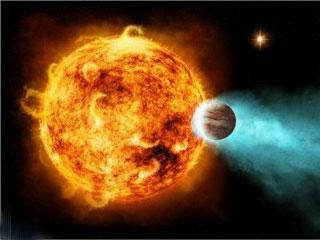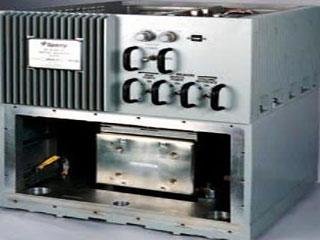
mage and illustration of a nearby star, CoRoT-2a, and an orbiting planet, CoRoT-2b. Photo: NASA.
WASHINGTON (BNS): NASA's Chandra X-ray Observatory and the European Southern Observatory's Very Large Telescope have presented a new data which suggest that high-energy radiation is evaporating about 5 million tons of matter from the planet every second.
This result gives insight into the difficult survival path for some planets.
According to NASA, the planet, known as CoRoT-2b, has a mass about three times that of Jupiter -- 1,000 times that of Earth -- and orbits its parent star, CoRoT-2a at a distance roughly 10 times the distance between Earth and the moon.
The CoRoT-2 star and planet is a relatively nearby neighbour of the solar system at a distance of 880 light years.
"This planet is being absolutely fried by its star. What may be even stranger is that this planet may be affecting the behaviour of the star that is blasting it," Sebastian Schroeter of the University of Hamburg in Germany siad in a NASA release.
According to optical and X-ray data, the CoRoT-2 system is estimated to be between about 100 million and 300 million years old, meaning that the star is fully formed. The Chandra observations show that CoRoT-2a is a very active star, with bright X-ray emission produced by powerful, turbulent magnetic fields. Such strong activity is usually found in much younger stars.
 Previous Article
Previous Article Next Article
Next Article











The Indian Air Force, in its flight trials evaluation report submitted before the Defence Ministry l..
view articleAn insight into the Medium Multi-Role Combat Aircraft competition...
view articleSky enthusiasts can now spot the International Space Station (ISS) commanded by Indian-American astr..
view article